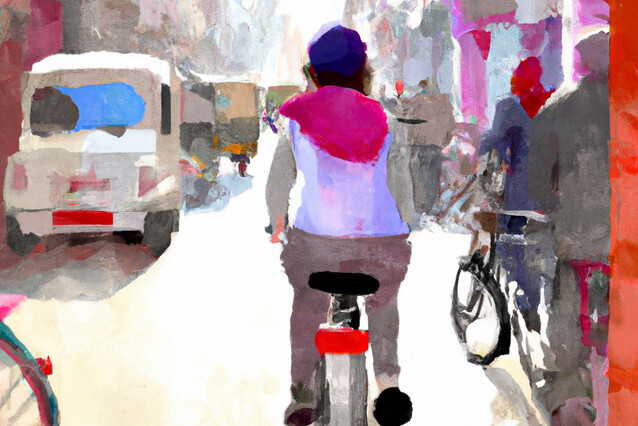Traffic jam: gene transcription hampers cohesin’s travel along chromosomes
Cohesin is an assemblage of proteins that folds our chromosomes by extruding the DNA molecule into loops. This process can be slowed down or impeded by a number of proteins, but also by gene transcription. In a study now published in the journal PNAS, scientists at the IMP and MIT reveal that RNA polymerases, the main enzymes responsible for gene transcription, act as moving barriers to cohesin’s progression. They obstruct, slow down, and push cohesin away, thereby shaping the organisation of our genome.
Popular illustrations of DNA show it as a neat, extended double-helix. In reality, it is a busy, winding road which binds and interacts with many proteins and other molecules along the way.
The nucleus of each cell in our body contains a two-metre-long DNA genome that is tightly packed and organised. Cohesin, a protein complex with a long research history at the IMP, mediates DNA folding by reeling it in numerous loops.
Cohesin’s progression along chromosomes is not always an easy one: some proteins, such as CTCF, can bind to DNA and act as static ‘red lights’, stopping cohesin in its tracks. In 2017, scientists in the lab of IMP Scientific Director Jan-Michael Peters observed that cohesin can accumulate on DNA where gene transcription takes place, forming ‘cohesin islands’ around active genes. This suggested that gene transcription could also play a role in modulating cohesin traffic.
In a study now published in the journal PNAS, scientists in the Peters lab and collaborators in the lab of Leonid Mirny at MIT investigated the interactions between gene transcription and cohesin’s activity. “Cohesin is a small complex navigating the narrow street of DNA, so when it faces RNA polymerases – the large enzymes that enable gene transcription – there seem to be unavoidable interactions taking place,” says Edward Banigan, co-first author and Research Scientist at MIT.
Scientists in the field of genome architecture are trying to understand the traffic rules that dictate the bustling activity that surrounds DNA. In this study, computer simulations and experiments came together to give us new insights into the rulebook.
“Imagine fast-moving cyclists, the cohesins, and very slow-moving cars, the RNA polymerases, sharing a narrow street. Once the cyclists go into the narrow street and catch up with cars, they have to slow down. If the cars are coming from the other direction, the cyclists have to back out,” explains Leonid Mirny. “At the molecular level, this means that cohesin’s progression along chromosomes is hampered by transcription, either because its course is slowed down, or because it’s forced to move opposite its original direction of travel.”
Initially, researchers had hypothesised that cohesin islands resulted from cohesins being preferentially loaded onto the DNA molecule at active genes. However, this study suggests otherwise. “It seems that cohesin can hop on the DNA road anywhere, and not preferentially where transcription is taking place at a given moment,” says Wen Tang, co-first author of the study. “The fact that polymerases slow down cohesins accounts for their accumulation at active genes.”
Molecular biologists often investigate how structures in the cell affect molecular functions. Here, however, the study shows that a basic cellular function, gene transcription, affects chromosome structure.
“Our findings result from a close collaboration between my group, which takes an experimental approach, and that of Leonid Mirny, which has great expertise in theoretical biology. This fruitful combination helps us simulate possible molecular scenarios that match reality and create predictions that we can test in the lab,” says Jan-Michael Peters.
Original publication
Edward J. Banigan*, Wen Tang*, Aafke A. van den Berg*, Roman R. Stocsits, Gordana Wutz, Hugo B. Brandão, Georg A. Busslinger, Jan-Michael Peters#, and Leonid A. Mirny#: "Transcription shapes 3D chromatin organization by interacting with loop extrusion". PNAS (2023), DOI: 10.1073/pnas.2210480120.
*co-first authors
#co-corresponding authors
Further reading
Research with Jan-Michael Peters
Cohesin - a molecular motor that folds our genome
Mission possible: how cohesin fits two meters of DNA into a human cell
